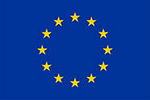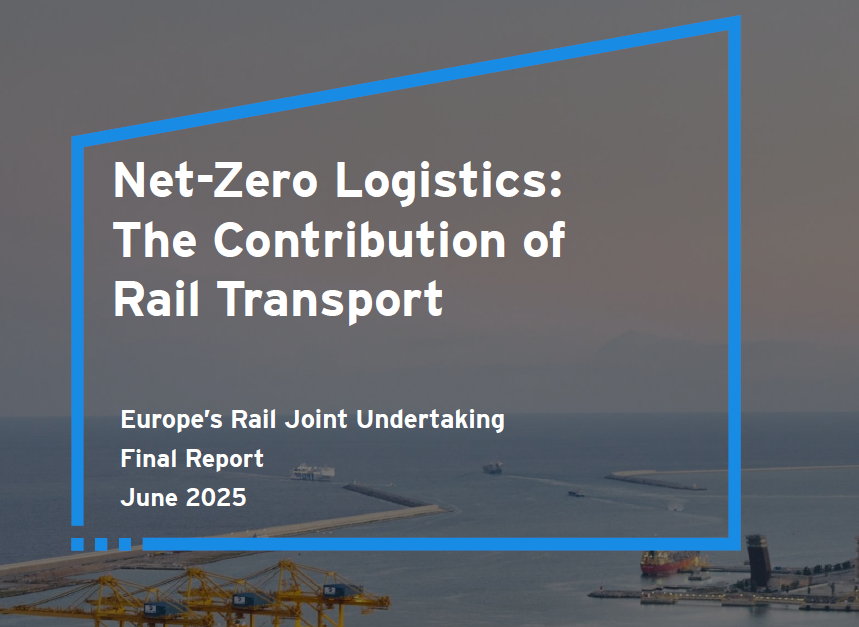Europe must take decisive steps to simplify and modernise its rail systems to strengthen competitiveness,...
With most Shift2Rail projects coming to a close this year, major demonstration activities testing different technological solutions developed within the programme are taking place across Europe. Our Members and partners carry out trials in real-life environments involving a wide range of experts, including operators, infrastructure managers, research centres, suppliers and in some cases even the final users.
In the month of September, we sat down with Giuseppe Rizzi, project coordinator of our Shift2Rail Innovation Programme 4 project IP4MaaS. We talked about the future of door to door travel and how the results from the Shift2Rail projects have already changed the transport landscape in Europe.
Tell us what is meant by ‘fully dynamic door to door travel’ and why is it important?
One of the ambitions of Europe’s Rail Joint Undertaking is to make rail the backbone of the transport system of the future and a more attractive mobility option for travelers across the continent. To do so, it is paramount that rail increases its capacity to better respond to customer new mobility needs, and this is achieved only abandoning a silo approach and reaching fruitful integration with other modes, including shared, on demand and soft modes. It is important to understand that every trip does not start at a station, but often on a smartphone or a laptop. Customers’ needs are evolving with the increased diffusion of digital tools, and it is important to understand these needs and react to them, providing the user with a tailor made multimodal door-to-door service that considers not only all the different options to move from A to B, but also the specific user preferences and priorities.
Tell us about what were some of the key objectives of the work to facilitate fully dynamic door to door travel?
The key objective of the Shift2Rail project IP4MaaS was to design, execute, monitor, and assess the demonstrations of Shift2Rail tools developed within the Innovation Programme 4 (IP4). IP4 is a research framework dedicated to IT Solutions for Attractive Railway Services. This ambitious objective was achieved by bringing together real users, transport services providers with the support of Shift2Rail Members. This extraordinary combination of actors allowed IP4MaaS to act as a bridge between the needs and requirements of travelers and transport services providers (TSPs) on one side, and the technologies developed within Shift2Rail framework on the other. These solutions have been tested in real conditions with hundreds of volunteers in the six IP4MaaS demonstration sites (Athens, Barcelona, Liberec, Osijek, Padua, Warsaw, with an additional demo organized as a “long-distance” connection between Liberec and Warsaw). The project started with an assessment of the needs and requirements of travelers and TSPs at demo level, identifying the mobility pain points in each demo site. This was a fundamental prerequisite to understand how the available IP4 solutions could address these mobility pain points and to define demonstration scenarios. Once done, the TSPs participating to the project have been integrated in the IP4 ecosystem, and then the demonstration could finally start: travelers could use the IP4 solutions to move from A to B in all demonstration sites, using the transport modes previously integrated.
What were the key challenges you had to overcome when you started looking at how to achieve a fully dynamic door-to-door travel?
The biggest challenge was without any doubt related to the integration of the transport service providers into the IP4 ecosystem. The ecosystem, developed and managed by other Shift2Rail projects of IP4, has some specific requirements for each functionality available in the ecosystem (for example, journey planning, travel shopping, location-based experiences, travellers’ feedback, booking and issuing). A TSP willing to be integrated with a specific functionality had to fulfil these requirements, which meant that some information and accesses to the service had to be provided in a specific format accepted by the ecosystem In IP4MaaS, a lot of effort was dedicated to supporting the involved TSPs (mainly operators) to study together solutions for enabling these services to be integrated in the easiest possible way, thus making it possible to plan and execute the demonstration activities. Another key challenge is related to the complexity of the ecosystem itself. Several meetings and interactions were organised between partners to let them receive sufficient training on the tools and on the different functionalities, to be able to properly guide users during the demos.
A lot of the more recent work was done in the IP4MaaS project, but what synergies did you have with other Shift2Rail projects and why were they important?
Collaboration with other Shift2Rail projects was paramount and essential for carrying out IP4MaaS activities at different stages of the project. A constant dialogue with IP4 ecosystem partners was established from the very beginning of the project. To mention only some: other IP4 Shift2Rail supported by the JU members performed the integration of the TSPs into the ecosystem; they helped the IP4MaaS partners providing technical assistance to fix bugs encountered during the internal testing phase; they interacted with demo actors for the translation of the Travel Companion mobile application; they agreed with IP4MaaS on a final calendar of the demos; they provided to IP4MaaS partners key data necessary for the impact assessment and project overall evaluation. On top of this, they participated to IP4MaaS dissemination activities and to the project’s Stakeholder Workshop, and the Final Event of IP4MaaS was organised jointly with other two complementary projects: CONNECTIVE and ExtenSive. IP4MaaS also signed a collaboration agreement with the S2R projects COHESIVE, CONNECTIVE and ExtenSive, to better regulate all the exchanges and interactions. On top of those projects, it is also important to mention the collaboration with the RIDE2RAIL project, aiming at integrating and harmonising real-time and diverse information about rail, public transport, ride-sharing and crowdsourcing in a social ecosystem, which will allow users to compare and choose between multiple options according to their preferences. Several IP4MaaS partners collaborated also with the RIDE2RAIL project (developed with a similar timeline/calendar) and in particular some of the demos were organised in the same areas for the two projects (Padua, Athens) with the demo leaders. That is why synergies have been exploited and joint collaboration meetings have been organised between different projects of Shif2Rail, for an overall IP4 Programme implementation approach.
You tested the Travel Companion mobile application in various cities and scenarios. What was the added value of running these tests across Europe?
The added value of running these tests across Europe was without any doubt to be able to spot similarities and differences between one geographic context and the other. If it is true that not all the IP4 available functionalities have been used in all demo sites, it was indeed useful to see how similar the reaction of users was, once the demo was closed and the so called “user satisfaction index survey” was completed and sent back to IP4MaaS demo leaders. Travelers from Greece, Italy, Spain, Czechia, Croatia, Poland…they all understood the potential of the IP4 tools and appreciated the idea behind them. Most of them understood the limitations provided by taking part to a research project, in particular related to the maturity of the technology that for sure needs to be further improved to get close to higher TRLs, but they enthusiastically accepted to collaborate with the project partners, recognising the importance of carrying out similar activities in order to start making some substantial steps towards a more efficient and user-centric multimodal transport landscape, allowing everyone in Europe to move seamlessly from one place to the other (that is the IP4 ambition, of course in the longer term).
Was there anything in particular that surprised you when carrying out the demonstration activities all across Europe?
I was particularly surprised by the enthusiastic participation of both TSPs and travellers across Europe. We achieved different numbers in terms of participation rate, but the common factor we could notice was the availability and openness of people to take part to our demonstration activities. It is for sure an indicator that there is a lot of interest around new mobility solutions facilitating people’s mobility, and this is encouraging for the “next steps” in Europe’s Rail Joint Undertaking. Also, the different TSPs participating and integrated in the ecosystem were extremely positive and enthusiastic about their participation, and this was true at all stages of the project, from the provision of material and accesses to the trainings, the preparation of the demos, the bug fixing and the actual demo execution and follow-up. They understood the potential of the tool, and they were flexible enough to somehow also see a bit “beyond” the natural technical issues that are part of every research project with IP4MaaS’s TRL. This was also true when it comes to the general public involved in the demonstration activities. In general, those who committed to participate, accepted to perform all the (in some cases) several steps to complete the required activities.
What are the key results of the stemming from the work you carried out?
The final evaluation demonstrated the viability of the IP4MaaS solution: overall the feedback of users and TSPs was positive and provided significant inputs for improvement and evolutions of the proposed services. Scores gained by KPIs measuring user/stakeholder acceptance, quality of service and multimodality were in general quite high. Of course, there were some differences from one demo to the other, but on average in all 6 locations results of the
The feedback from IP4MaaS evaluation, gathered by all involved actors leads to the overall recommendation that the users’ mobility experience is closely linked to the availability of effective digital applications. IP4MaaS proved that the idea of integrating TSPs in a large and EU ecosystem like the IP4, could create the ideal conditions to raise the convenience for this behavioural change and overcome some of the current barriers for a large scale MaaS (Mobility as a Service) adoption. The evaluation methodology designed and applied in the project may be a reference for future assessments when implementing complex mobility scenarios in EU cities. This is without any doubt a huge achievement the whole consortium is really proud of, and for sure something that can be re-used in the future in similar exercises.
Why is the Shift2Rail/Europe’s Rail Travel Companion unique and how does it differ from other travel applications currently available?
What makes the Travel Companion a really unique tool, different from other travel applications currently available on the market, lays in its own ambition. Through the Travel Companion, a traveler from anywhere in Europe can have full control of the journey, from the planning to the after-journey phase. The application gives access to all travel services needed for the journey, such as shopping, booking, issuing, navigation, group travelling, allowing storage of the rights to travel. At the same time, retailers and operators are able to identify and authorise the Travel Companion to access their own systems and networks, thus improving the quality of their services and also getting direct feedback from the users. What we notice being paramount nowadays is the communication of information. Travelers get very frustrated when there is no information about issues such as accidents, delays, disruptions on the line. The Travel Companion enables travelers to report issues, and operators to respond more promptly to them, also improving communication via a dedicated messaging/notification tool. This is a key factor impacting massively on the overall user satisfaction. Additionally, through tools like the CMMP (Contractual Management Market Place), TSPs are allowed to describe products that can be added to mobility packages and to propose new mobility packages to other stakeholders. This can result, for instance, in a new product (an integrated ticket, possibly with a discount) delivered to the traveller, that can thus benefit from this. TSPs, via another tool called “Location Based Experiences Editor”, can add POI (points of interest) – to the Travel Companion, to allow travellers around that POI to visualize all relevant information about it. In an era in which we are all hyper connected and smartphones are diffused and utilised on a global scale, the Travel Companion can become an interesting tool that can go way beyond the “simple” travel planning. Its ambition is to become a Europe-wide mobility solution, capable of allowing users from everywhere to organize, plan and execute trips everywhere, making unnecessary to download several “local” journey planning or MaaS apps. Of course, to achieve this great ambition that can in theory provide a disruptive added value to the traveller but also to TSPs involved, operators and services providers from all around the continent need to accept to be integrated. IP4MaaS constitutes only a step towards the completion of this ambition, making it possible to test with real people the current version of the Travel Companion with some of the functionalities already available. The project provided some outtakes and lessons learnt that can be beneficial for other IP4 projects to improve the ecosystem and learning from the demo experiences to enhance the quality of the services, the flexibility of the tool and the overall user experience, getting closer and closer to the achievement of the above-mentioned ambition.
How are the results feeding into Europe’s Rail and how will they facilitate the work of the new partnership?
As mentioned, one of the most important results of the IP4MaaS project can be considered the collection of recommendations and lessons learnt, both from travellers and TSPs. These lessons learnt can be beneficial for the partners managing the IP4 ecosystem, to understand how to better respond to users’ feedback and make the entire ecosystem more flexible, efficient, and competitive. Despite the potential of the solutions tested on field in the IP4MaaS demos that proved to be understood and very appreciated, users reported a certain number of improvements on the technological, attractiveness/user-friendliness, integration,and communication side. This feedback, on top of the already mentioned overall positive results of the project demos, constitutes a particularly important heritage of IP4MaaS, a precious material that can help the ecosystem become more efficient and user/TSP friendly, enhancing its renown potential and getting closer to the already largely described Programme ambition. Indeed, this would be a fantastic way to exploit further the excellent job done by the S2R projectsin all these years, and a way to keep putting the user at the centre of the mobility system. Of course, to achieve this, it is important to keep working on improving the data framework / sharing policy, that is nowadays one of the most important topics of discussion and sometimes a real barrier for MaaS implementation.
Finally, I would like to take this opportunity to really thank all the actors involved in the project, as UITP it has been great coordinating IP4MaaS:from the project partners, who worked really hard in the last 2.5 years to “make it possible”, to the other S2R IP4 projects and the S2R JU Members who constantly supported the project from the very beginning, to the JU staff that supervised and monitored all the project activities. As I always like to say, outstanding results can be achieved only through synergies and fruitful collaboration, and IP4MaaS is an excellent example of how much this is true.
















